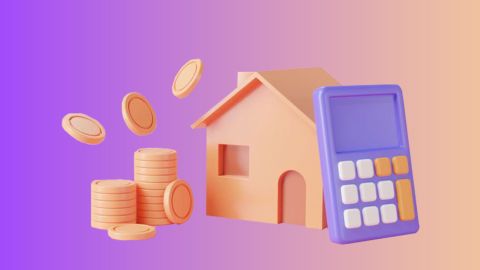Land records are essential documents that provide information about land ownership, land use, and various rights associated with land parcels. Among the crucial components of land records is the Record of Rights (ROR), which plays a fundamental role in documenting land ownership and tenancy rights. Understanding the significance and components of ROR is crucial for individuals, government authorities, and other stakeholders involved in land-related transactions and disputes.
Navigating the complexities of land ownership is essential, and having accurate land records is paramount in securing your property's future. Just as the Record of Rights (ROR) ensures clarity in land transactions, Bajaj Housing Finance Home Loans offer you the clarity and stability you need to realise your dream of owning a home.
With our long repayment tenures and competitive interest rates, our home loan empowers you to take the next step in your homeownership journey with confidence. Whether you are purchasing your first home or looking to invest in real estate, our hassle-free loan application process and personalised solutions make homeownership more accessible and achievable.
Introduction to ROR in Land Documentation
ROR, often referred to as "Patta" or "Khata," serves as a foundational document in land administration systems worldwide. Originating from the need to maintain accurate land records, ROR embodies a detailed account of land parcels, their ownership patterns, and their various associated rights. Essentially, it acts as a testament to the legal status of landholdings and aids in safeguarding property rights.
The importance of ROR in land management
The significance of ROR in land management cannot be overstated. It serves as a cornerstone for property transactions, enabling potential buyers to ascertain the legitimacy of land titles and associated encumbrances. Moreover, ROR fosters accountability among landowners and governmental agencies, promoting efficient land governance and resource allocation.
Components of ROR
A typical ROR document comprises several key components, including, but not limited to:
- Owner details: Names and particulars of current landowners.
- Land description: Precise demarcation of land boundaries and area measurements.
- Cultivation details: Information regarding crops cultivated and corresponding cultivation rights.
- Encumbrances: Any legal or financial encumbrances affecting the land, such as mortgages or liens.
- Mutation records: Records of any changes in ownership or land use, duly authenticated by competent authorities.
Types of ROR documents
ROR documents may vary in format and content based on regional regulations and administrative practices. Common variations include agricultural ROR, urban ROR, and digital ROR formats, each tailored to suit the specific requirements of their respective jurisdictions.
How ROR is obtained and maintained?
Obtaining an ROR typically involves an application process facilitated by local land revenue authorities. Upon submission of the requisite documents and verification procedures, the ROR is issued to the applicant, reflecting the updated land records. Maintenance of ROR records entails regular updates and revisions to accommodate changes in land ownership or land use patterns.
ROR and land ownership rights
ROR serves as prima facie evidence of land ownership rights, delineating the boundaries of individual parcels and affirming the legal status of landholdings. It empowers landowners to assert their rights and interests while providing a framework for resolving disputes through legal recourse.
Consider Bajaj Housing Finance Home Loan
As you understand the complexities of land ownership and documentation, it's clear that having accurate land records is paramount for securing your property's future. However, beyond just understanding the Record of Rights (ROR), there's another crucial aspect to consider - turning your homeownership aspirations into reality. Bajaj Housing Finance Home Loans offer you the financial support you need to make your dream of owning a home a tangible reality. Here are a few benefits of applying for a home loan with us:
- Convenient repayment options: Enjoy peace of mind with extended repayment tenures of up to 32 years, making loan repayment a breeze. Select a repayment plan that suits your financial situation, allowing you to effectively prioritise your loan repayment.
- Personalised loan solutions: Tailor your home loan precisely to your needs with our customisable options. Whether it's adjusting the loan amount, or repayment tenure, our solutions empower you to achieve homeownership on your terms.
- Competitive interest rates: Begin your homeownership journey with competitive interest rates starting at just 7.99%* p.a., ensuring affordability and manageability. With EMIs as low as Rs. 722/lakh*, owning your dream home is within easy reach.
Additional finance with the top-up loan facility: Seamlessly access additional funds of Rs. 1 crore* or higher through our top-up loan facility, coupled with attractive interest rates and minimal documentation. Whether it's home renovations, repairs, or expansions, benefit from this added financial flexibility while enjoying the convenience of our home loan balance transfer facility.
If you are considering purchasing a residential property, explore the option of a home loan from Bajaj Finance. Apply now.




